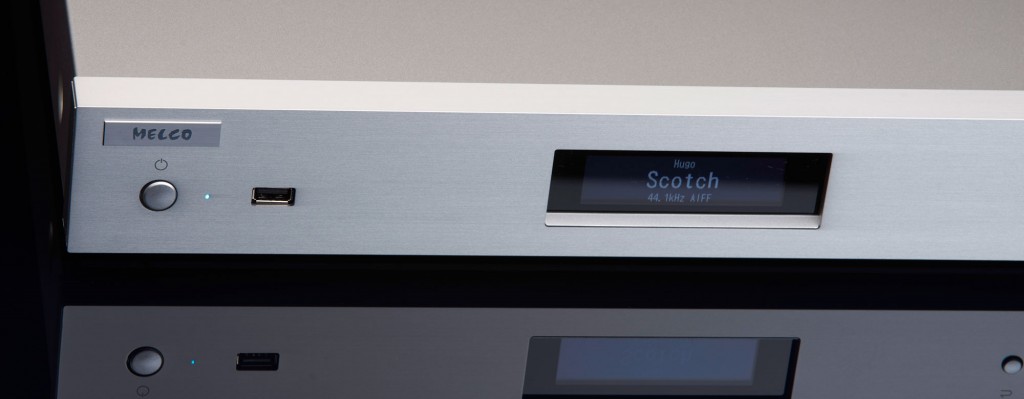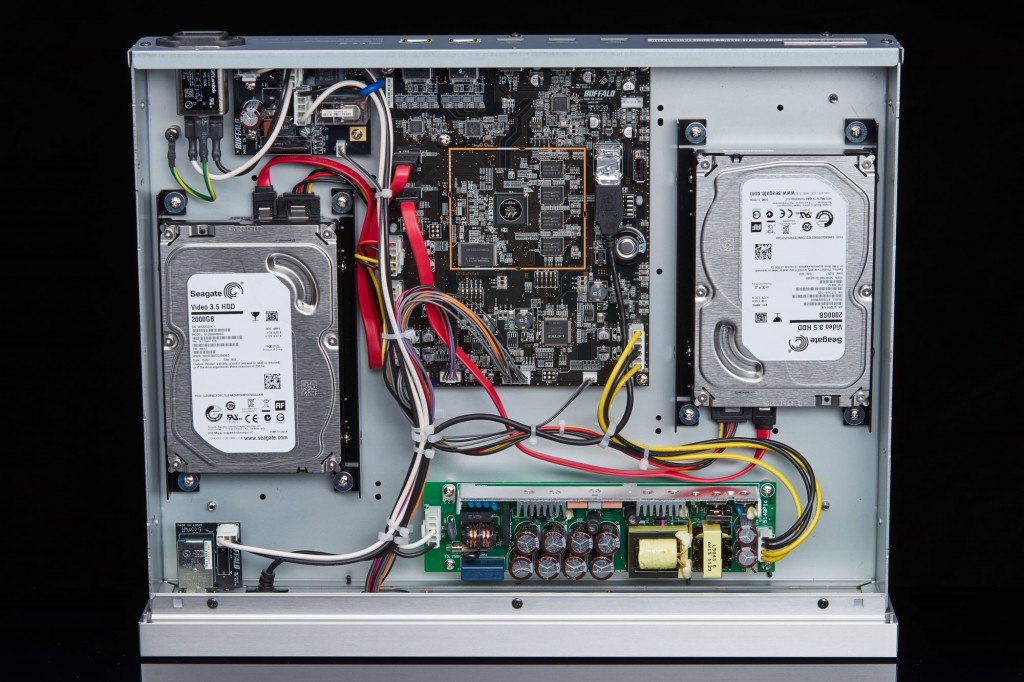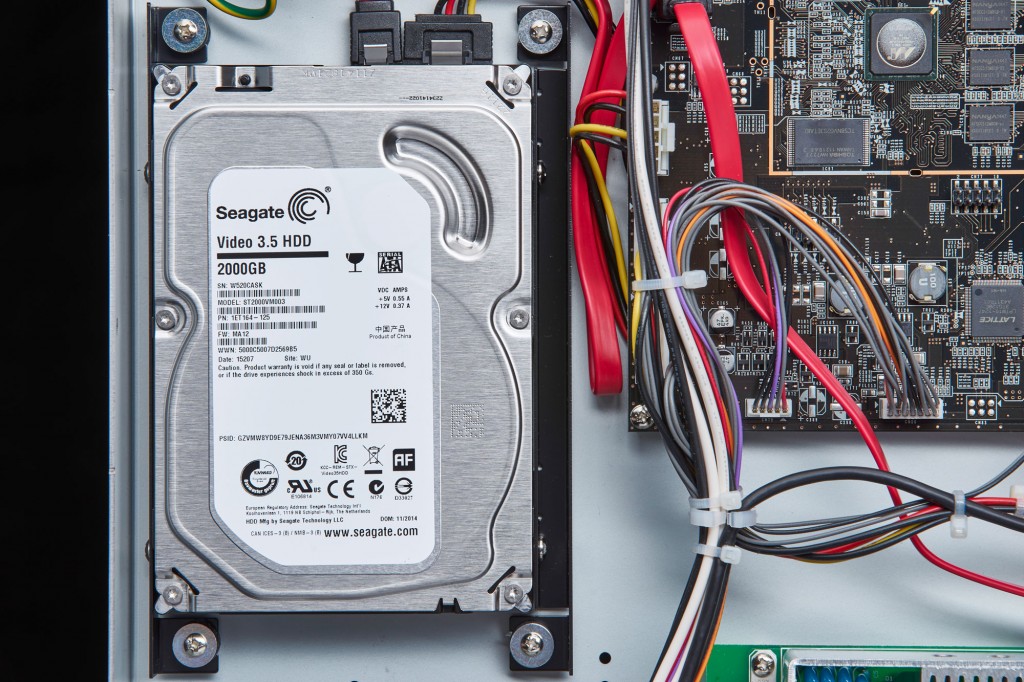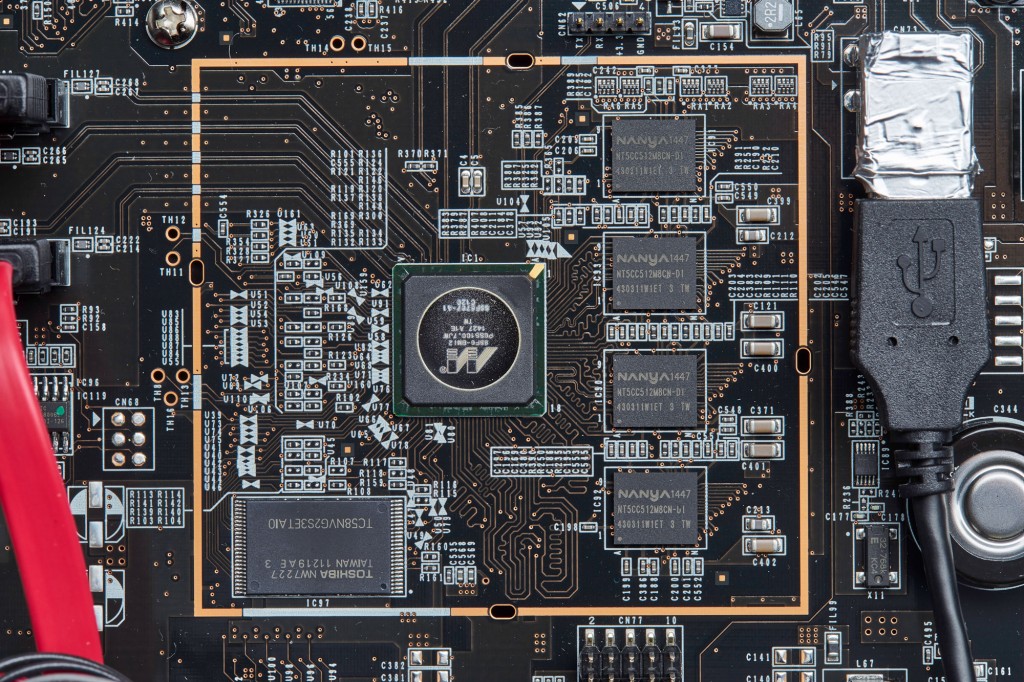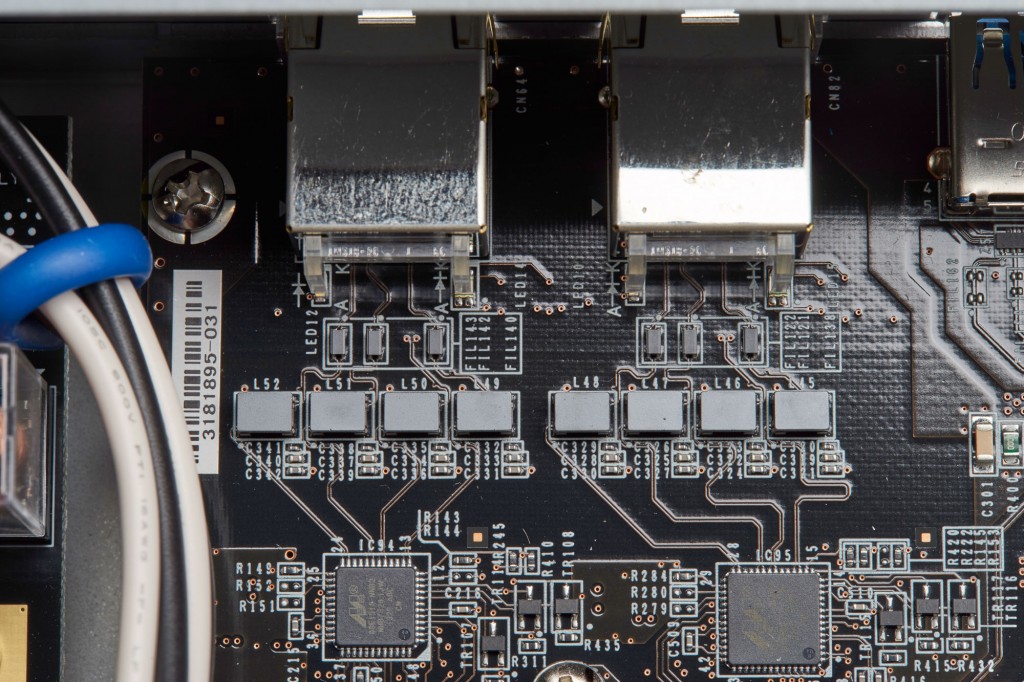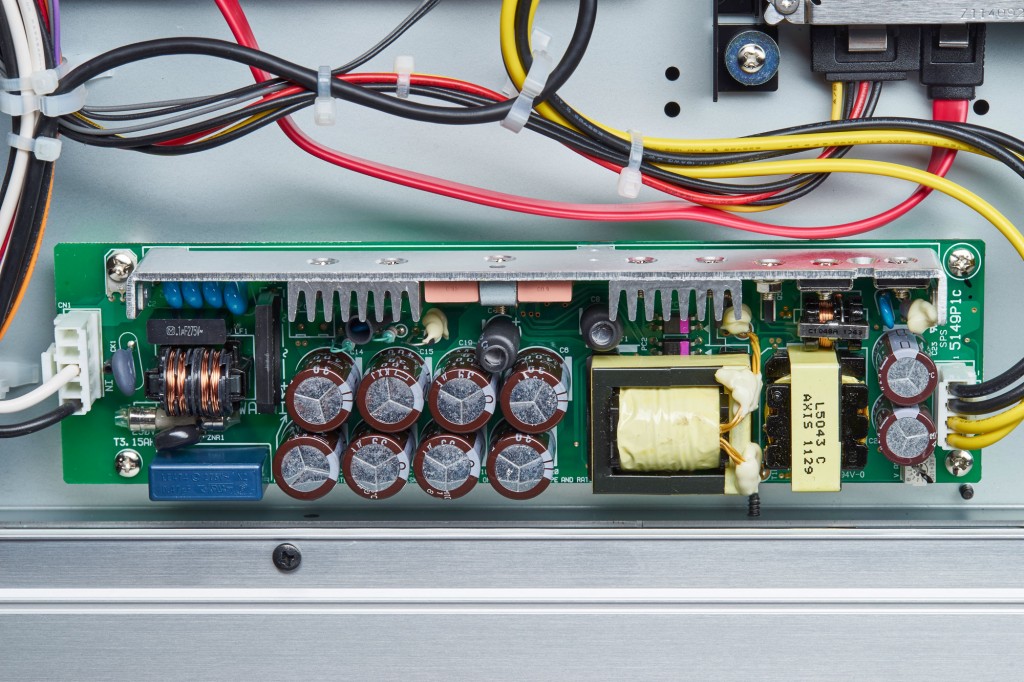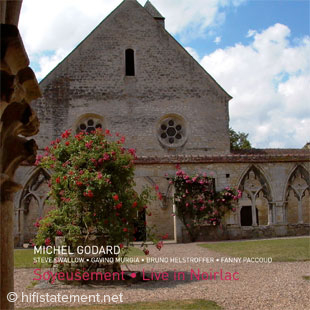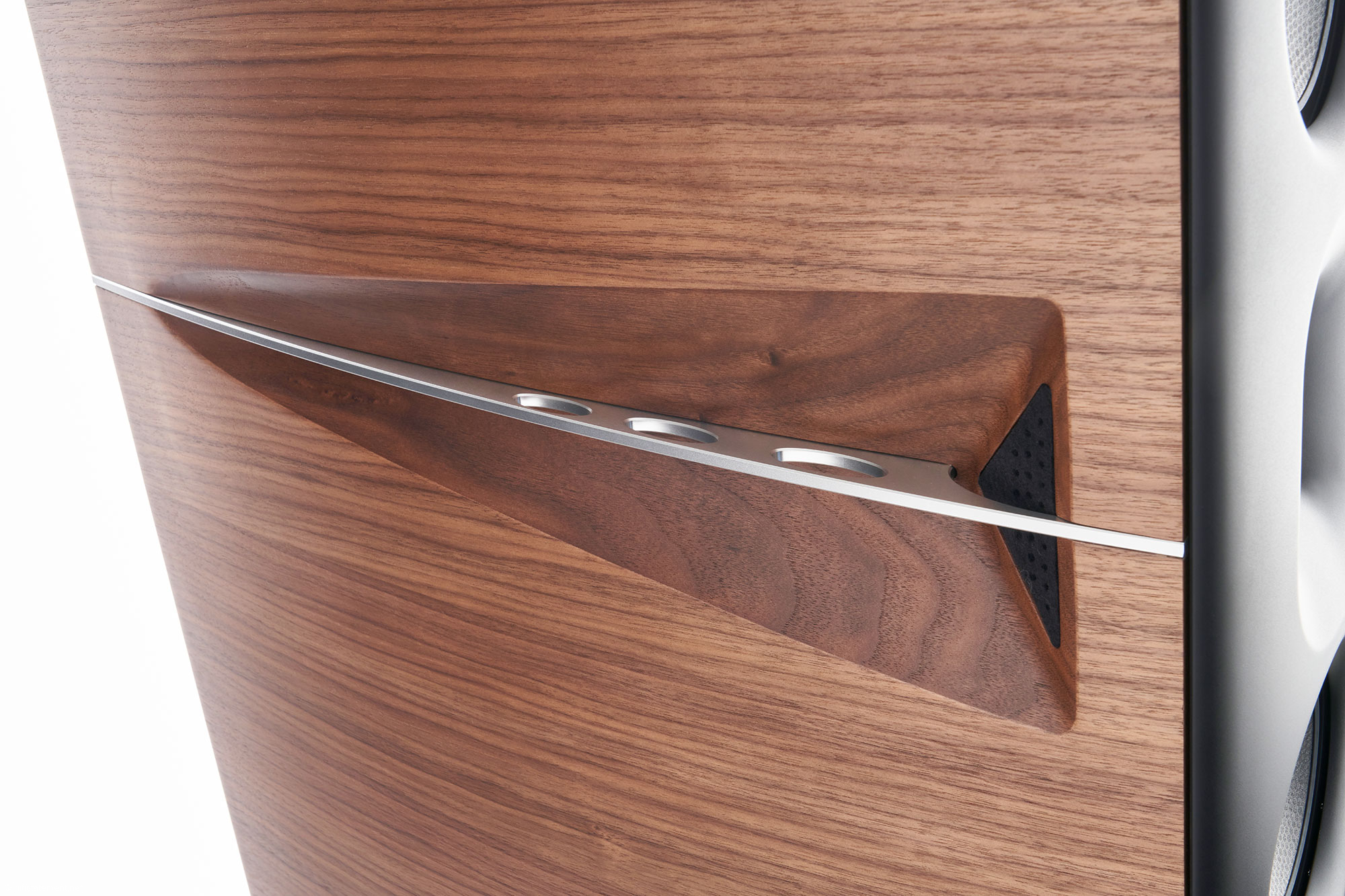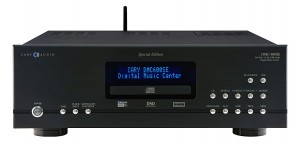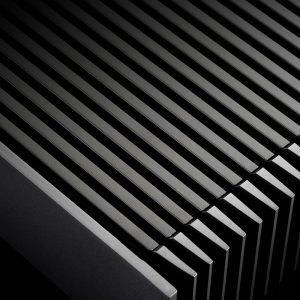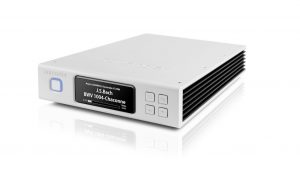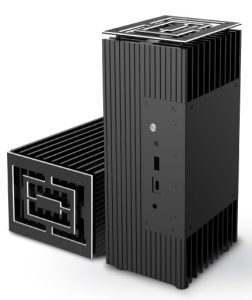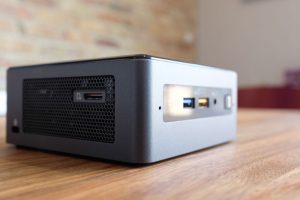[Amended byline: Roland Dietl, by courtesy of Dirk Sommer]
If you are into music streaming and especially into hires music there is one question you can't avoid: Where to store all these files? Until now the way to go was either to keep the music on your PC or laptop computer, or to use a Network Attached Storage Device (NAS)
There are cheap NAS drives and there are expensive ones, but generally speaking they all work the same. Basically they are simple computers (yes, computers!) that use one-chip processors that combine the CPU with SATA USB and Ethernet controllers. They usually run on some kind of Linux operating system, sometimes customised by the manufacturer for use in their devices. That operating systems manages the data on the hard disks, organises them in one or more logical drives and manages user rights to determine who can access the stored data. In addition to that these devices use a streaming server software that is able to stream the music over the network when asked to do so by another device.
Interior view of the N1A: The two 2TB hard disks are to the right and to the left, between them the mainboard with the processors and peripherals. Top left are the mains filter and the relay board for the power switch; the switch-mode power supply is at the bottom.
The NAS streams the music through the same local network (LAN) that usually also has many other devices plugged in. There is your Smart TV streaming a movie from the Internet, your computer surfing the web, and any number of mobile devices using the network for various tasks. It doesn't come as a surprise then that music streamed over this crowded network doesn't sound as good as you'd wish when it arrives at your high-end
music system. Most often there is a huge discrepancy in the amount of effort (and money) that goes into the hi-fi system compared to how little people seem to care about the actual source and the network. This is where the Melco HA-N1A comes into play, because it is supposed to be more than just another NAS in a fancy box. While its main purpose is still to store music and serve it to the network it goes about this job in a rather different way.
One main concern when developing the N1A—besides the sound quality, of course—was to make it as easy to use as possible. It was designed to offer a way into the world of music streaming without the need to use a computer—and without the need for an engineering degree to be able to set everything up. This meant that importing files, expanding the storage capacity and backing up data all needed to be very easy, indeed.
One of the two 2TB Seagate hard disks with the decoupled mounting system.
This requirement led to some interesting solutions. There are three USB sockets at the back of the unit, each serving a specific purpose. The socket labeled 'Expansion' can be used to plug in additional drives, effectively allowing for potentially unlimited total storage capacity. To save the stored data onto other devices one can use the 'Backup' socket. And finally, the third USB socket is there to connect the N1A directly to any USB Class 2 compatible USB DAC. These three USB sockets are controlled internally by a separate USB controller, which means they can't interfere (much) with other parts of the system.
Rearside terminal with three USB3 sockets for DAC, Expansion, and Backup, and two Ethernet ports for local network access and the streaming player.
Another unusual solution within the N1A is how the unit can be connected to the network and to the streaming player. There are two Ethernet ports instead of the usual one at the back. They are also especially filtered and run on their own voltage supply. The port labeled 'LAN' is meant to connect the N1A with the router and the local network. The socket labeled 'Player' will then be used to connect the streaming player directly to the Melco unit. This setup, which in technical words means the N1A acts as a network bridge, is there to remove the player as much as possible from whatever is going on in the rest of the network while at the same time keep it accessible for other devices in the network, for example additional NAS drives. Of course this also means that any music stored in the Melco N1A can also be streamed to other devices within the network, for example in other rooms.
The N1A's sturdy enclosure is thoroughly grounded, as is its power supply. A mains filter behind mains inlet connector helps in cleaning the mains noise. A relay is used to delay and control the powering down of the system so that the operating system and hard disks can shut down properly after the power button has been pressed. Power is being supplied by a powerful 60W switch-mode power supply and voltage regulators on the mainboard. The one-chip processors Marvell Armada 370, the two Seagate hard disks with 2TB capacity each, and other parts are fairly standard components and could also be found in other, 'ordinary' NAS drives. The N1A runs on Linux as an operating system and uses a modified Twonky Server 7 to manage stored media data. It comes with an easy-to-understand illustrated manual so that anyone should be able to have the system up in running in no time at all. And once you've done that, you can put it into your hi-fi rack and forget about it.
This is the heart of the N1A: The Armada 370 one-chip processor in the middle. The larger chip on the left is for the operating system, and the four chips on the right make up the 2GB RAM memory.
For this test, I integrated the N1A in my own audio network setup, which included the outstanding Ayon S3 as a streaming player. To control everything I used the well-known PlugPlayer App on my iPad. First, I tried to find out if the Melco’s integrated bridge really made a difference in sound. And it does. Maybe not dramatically so, but certainly noticeable. The music seemed to be somewhat clearer and more lucent with the Ayon hooked up to the Melco, so I decided to keep that setup for the remainder of the test. I copied some of my favourite tracks from my NAS onto the N1A and spent a lot of time listening. And with every track I played the Melco managed to convince me even more. It's not easy to exactly describe the change in sound quality but it can be compared to a curtain being pulled away in front of the music. It doesn’t matter if you are playing Rock, Jazz or Classic, neither does the bitrate you are using. The N1A will always bring out the best in your components. Not by changing their characteristic sound, but by elevating it it to a new, better level and subtly adding a splash of refinement.
The two Ethernet ports with 4 filter elements each.
For me the ability to play crisp and crystal-clear high pitch sounds without adding any amount of harshness was maybe the most noticeable change. This was especially obvious when playing the first set of the Scottish Chamber Orchestra's recording of Sergei Profiev's Symphony No 1 (Scottish Chamber Orchestra, Prokofiev: Symphony No. 1; Violin Concerto No. 2; Five Melodies for Solo Violin & Strings). This excellent recording conveys
this special interpretation by the Chamber Orchestra with precise focus and amazing spaciousness. Especially the bassoons that at the beginning play together with the strings stand out better, and can be heard clearer than before. The amount of detail that the Melco N1A manages to reveal together with the Ayon S3 is simply astonishing. Equally impressive is the clear and very natural rendering of voices with every track I tried. With 'And The Boy' (Angus & Julia Stone: Down the way), Julia Stone's fragile voice doesn't drown in the full-bodied low end—on the contrary. The very distinct qualities of her voice are clearly audible all the time. I heard a similar effect, but even more noticeable, when listening to Diana Krall's crystal clear vocals in 'Tempatation'. (Diana Krall: Girl In The Other Room).
The Melco N1A proved to be very relieable and extremely versatile in every-day use. For example, I temporarily connected a PS Audio DirectStream DAC via USB. My PlugPlayer App made it extremely easy to switch playback between the Ayon and the DirectStream, as well as play music from my own server instead of from the N1A. I tried this in all combinations I could think of, and they all worked flawlessly. And, more importantly, it was always immediately obvious whether or not the N1A was in some way part of the playback chain. The limpid purity that the Melco adds to any musical performance was always clearly noticeable at once. There is no doubt in my mind: Even in the age of digital music, streaming good sound still starts at the source. If you thought all kinds of storage sound the same because it's digital, the Melco N1A will make you think again. It combines NAS junctionality, ease-of-use, and sound quality in a truly impressive way!
Statement
If you are seriously into music streaming have a close look at the Melco N1A. It is a great all-in-one solution to store and manage your music files, and it will bring out the best sound our system has to offer.
Powerful 60W switch-mode power supply
Listened with:
- NAS: Windows Home Server with JRiver 19
- Streamer: Ayon S3
- Power Amp: Omtec CA 25
- Loudspeakers: Outsider Jota with Velodyne Subwoofer Management System SMS-1
- Cables: Van den Hul
Specifications
- Melco HA-N1A
- LAN Interface: IEEE 802.3ab (1000BASE-T), IEEE 802.3u (100BASE-TX), IEEE 802.3 (10BASE-T)
- LAN Speeds: 1000 Mbps Full Duplex (Auto-Negotiation), 100 Mbps Full Duplex/ Half Duplex (Auto-Negotiation), 10 Mbps Full Duplex/ Half Duplex (Auto-Negotiation)
- Ethernet Ports: 2 RJ-45 Ports (Auto-MDIX supported)
- Network Protocol: TCP/IP
- Network Access Method: CSMA/CD
- USB Terminals: 1 X USB 2.0 (front panel), 3 X USB 3.0-Anschluss (rear panel)
- Integrated harddisks: HDD (2 TB x2)
- Dimensions (W/H/D): 436/70/352 mm
- Weight: 7kg
- Power Supply: 100–240 VAC, 50/60 Hz
- Power Consumption: 60 W (max.)
- Working Environment: Temperature 5–35°C, Humidity 20-80% (non-condensing)
Price: 2000 Euro
Distributor in Germany
G8 & friends GmbH – High Quality Distribution
Robert-Koch-Str. 30
59227 Ahlen
Germany




